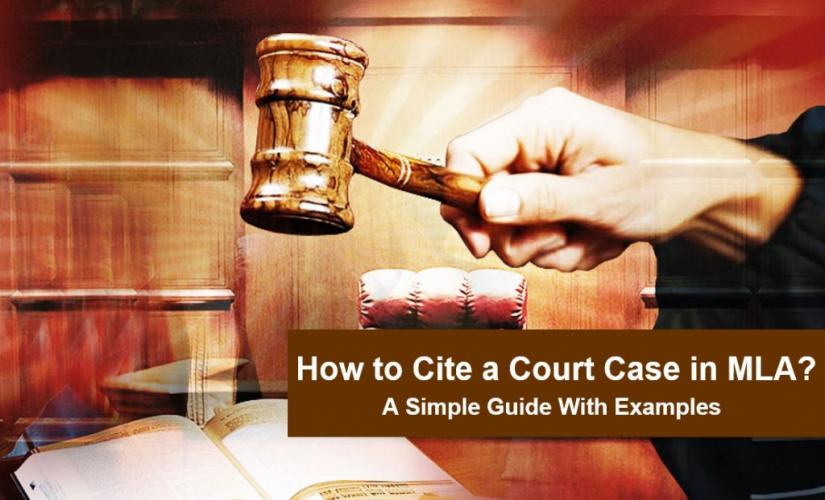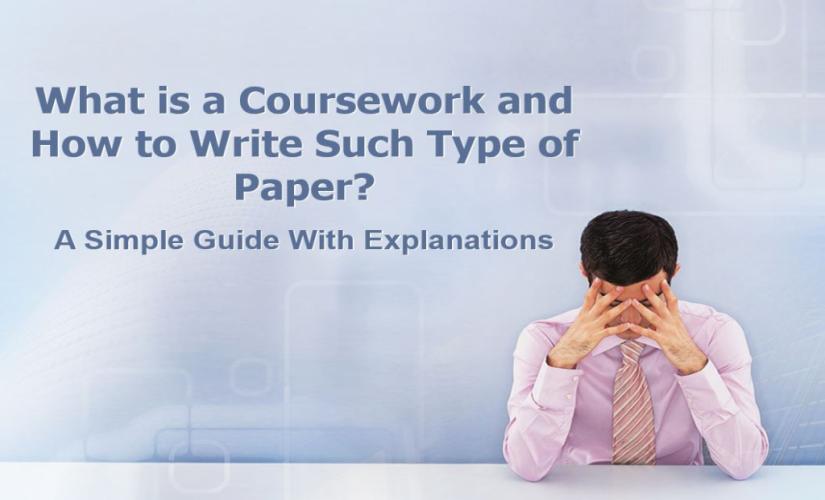Judges make decisions reported as court cases, which contain legal arguments when writing scholarly papers in MLA 9. Basically, credible court cases include decisions made by the jury in settling specific disputes. In particular, students must prepare a bibliographic entry of court cases in MLA 9 that contains parties involved in conflicts, judges who made the decision, a summary of the case, and the decision taken. Also, credible bibliographic entries should include the year when judges made the decision, the court’s name, URL and database name, the volume of the report, the first page that contains the court case, and the date when students accessed the material. Then, multiple reporters, both official and unofficial, present a summary of various court cases. In turn, writers should use court case issues by official reporters. Hence, knowledge of how to cite a court case in MLA 9 affects the overall quality of academic essays and research papers.
General Aspects of Citing a Court Case in MLA 9
Decisions made by judges contain accurate information that one can use to support legal arguments when writing scholarly articles in MLA 9. For example, a legal court case refers to a document that includes decisions made by the jury in settling a specific dispute. In practice, court cases contain parties involved in conflicts, judges who made the decision, a summary of the case, and the decision taken. Then, other details may include the year when the occurrence took place and the court’s name. In turn, students cite information from legal cases, which come from the lowest to the highest court.

MLA Citation of a Court Case
U.S. legal citations on laws allow readers to understand where to find and locate a legal document. For example, students should indicate the volume and page number to find a specific case in a series of reporters. Basically, court cases exist in multiple reporters, both official and unofficial. In turn, writers may encounter various citations for one court case in MLA 9. However, authors should consider using court cases presented by the official Supreme Court reporter. As a result, the strategy prevents a possible confusion in the MLA citation.
The Main Rules of Citing a Court Case in MLA 9
A writer should cite the official Supreme Court Reporter, the United States Reports, which contains credible law information by considering MLA 9. Basically, court cases found in the United States Reports include five elements, namely:
- name of the court;
- title of the case;
- reporter;
- the volume of the United States Reports;
- the year when judges made their decision;
- the first page in the reporter that contains the specific case;
- name of the database;
- URL link of the reporter.
1. Name of the Court
The name of the court should be the first item in the bibliographic entry of a case in MLA 9. For instance, students should identify the name of the court that decided the cited case. Basically, some of the United States courts include the Supreme Court, Courts of Appeals, District Courts, and Bankruptcy Courts. Then, the court’s name should appear in the title case where all the words must begin with a capital letter. In turn, writers should not italicize or underline the name of the court. Besides, a period should follow the name of the relevant court. Therefore, the first item in the MLA 9 citation should identify the court that decided in the case considered by authors.
2. Title of the Case
The name of the case should be the second item in the bibliographic entry created by following the rules of MLA 9 citation. For instance, the name of the case includes both the plaintiff and the defendant. Practically, students should italicize case titles. Then, case names should appear in the title case where all the words begin with a capital letter. However, one should not capitalize the first letter of linking words. In turn, one should use the letter “v,” representing the term “versus” between parties involved in the case. Also, a period should follow the letter “v.” Therefore, writers should include an italicized name of the situation after identifying the court involved in making the decision.
Punctuation
One must use the correct punctuation when following the rules of case titles. In practice, a comma should follow case titles, which makes this item different from the court’s name. Basically, this case occurs where one fails to identify the reporter of the case, covering how to cite a court case in MLA 9. Also, students should take caution to avoid the common mistake of putting a period after case titles. In turn, wrong punctuation marks make bibliographic entries vague and may confuse intended readers. Therefore, writers should use the correct punctuation when considering case titles.
One should use the correct punctuation when including reporter’s names. For instance, a period should separate case titles and reporter’s names. Basically, one should first note details available for the MLA 9 citation before developing bibliographic entries. From a practical perspective, failing to include a period may confuse readers in distinguishing the reporter’s name from the case’s title. Hence, one must use the period after titles when including reporter’s names.
3. Reporter
Reporters of court cases refer to institutions presenting references. For instance, students can find both official and unofficial reporters. In practice, one should use official law reporters when citing a court case in MLA 9. Moreover, writers can include reporter’s full names or abbreviations. As a rule, one should italicize full titles of reporters. Then, this information should follow case titles. Basically, some of the official reporters include the United States Reports and the Federal Supplement. Also, one should use unofficial reporters if cases cited do not appear in the United States Reports and the Federal Supplement. Hence, writers should include reporter’s full names after case titles cited.
Abbreviation
On the other hand, students may decide to use abbreviations of report’s names. For instance, the acronym for United States Reports should be the U.S. Basically, using abbreviations require writers to follow a different format from the one used to present titles. Moreover, authors should not include any punctuation mark between volumes and abbreviations of reporters. Hence, one may decide to use the following abbreviations of the court case’s reporter.
- U.S. – United States Reports
- L. Ed. – United States Supreme Court Report, Lawyer Edition
- L. Ed. – United States Supreme Court Report, Lawyer Edition, Second Series.
- S. Ct. – Supreme Court Reporter
4. The Volume of the Report and the Year of the Case’s Decision
Students should include the bulk of reports containing court cases when citing such a source in MLA 9. For example, one should use the phrase “Vol.” when writing volume numbers of court reports. Basically, this information should follow names of reporters. Then, the year of the case’s determination should follow volumes. In turn, one should use a comma to separate reporter’s names, volume numbers of sources, and the year of the case’s determination. Therefore, one should include the report’s volume and the year of the specific case’s judgment.
5. The First Page in the Report that Contains the Specific Case
One should indicate the first page of the court case cited in MLA 9. For instance, a report contains many court cases. Basically, each case’s determination spans a specific page range. Then, one should identify the page where a trial begins and include it in bibliographic entries. Moreover, authors should use letters “pp.” before the actual page containing court cases. In turn, the positive sign “+” should follow the first page to indicate that the court case includes several pages. Moreover, a period should follow the positive sign. Therefore, this part of citing a court case in MLA 9 should consist of the first page of reports that contain cited sources.
6. The Name of the Database
One should include the name of the database that contains reports with court cases. For instance, students can find court reports that contain court cases from various websites. Basically, one should include names or titles of websites. Also, writers should note that names of databases differ from that of publishers. In turn, one should italicize database’s titles. Therefore, authors should include databases that contain court cases for bibliographic entries in the MLA 9 citation.
7. The URL Link of the Report
Reports available online should contain a correct URL. For example, URL links allow readers to locate the actual court report that contains the cited case. Basically, one may include the URL link or the DOI of the court report that contains the cited case in MLA 9. Then, a period should follow URL links. In some instances, writers should include dates when they accessed materials. Hence, one should consist of valid URL links to sources.
Schemes and Actual Bibliographic Entries
1. Schemes for the MLA Citation of a Court Case:
- Name of the Court. Title of Case. Title of Reporter, volume, Publisher, Year, Page(s). Database Name or Title of Non-Publisher Website, DOI, or URL. Accessed Day Month Year.
- Name of the Court. Title of Case. Title of Reporter, volume, Publisher, Year, Page(s).
The first scheme contains more details than the second one. Basically, some of the extra information includes database name, and URL.
2. Examples of Actual Bibliographic Entries for Citing a Court Case in MLA 9:
- United States, Supreme Court. New York State Rifle and Pistol Association v. Cuomo. Federal Supplement, Second Series, vol. 990, 2013, pp. 349+. Case Text, https://casetext.com/case/ny-state-rifle-pistol-assn. Accessed 18 Dec. 2019.
- United States, Supreme Court. New York State Rifle and Pistol Association v. Cuomo. Federal Supplement, Second Series, vol. 990, 2013, pp. 349+.
Summing Up on How to Cite a Court Case in MLA 9
Judges make decisions reported as court cases. Basically, writers can use these documents to support their legal arguments when writing scholarly papers in MLA 9. For example, a court case contains decisions made by the jury in settling a specific dispute. In turn, correct bibliographic entries for citing a court case in MLA 9 represent parties involved in conflicts, judges who made the decision, a summary of the case, and the decision taken.
Other details in laws may include the year when the trial took place and the name of the court. Moreover, the MLA citation for court cases allows readers to understand where to locate a legal document. In particular, a credible bibliographic entry should include the volume and the page number where one may find the specific case in a series of reports. Besides, multiple reporters, both official and unofficial, present a summary of various court cases. However, a writer should use court case issues by official reporters. Hence, one should consider the following tips when developing MLA citations for legal claims.
- Students should use correct punctuation when citing bibliographic entries of a court case in MLA 9.
- Writers should use title case when writing bibliographic entries.
- Authors should use italics appropriately.
- Credible citations contain names of databases, URL links, and dates when writers accessed materials.


